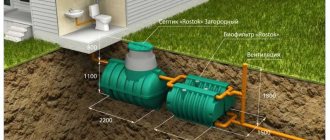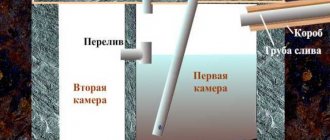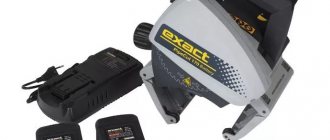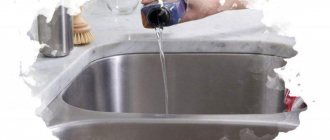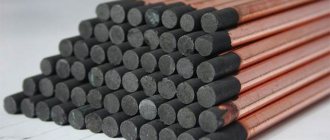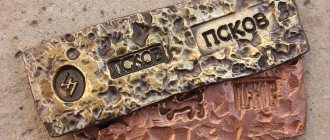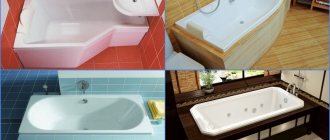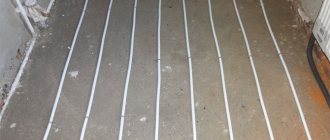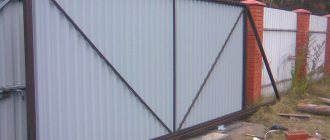Home / Welding technique
Back
Reading time: 2 min
0
526
There are many ways to weld copper pipes: induction joining of copper pipes, capillary joining, various tees.
At the same time, any welding of copper pipes has its own subtleties. In this article, we will describe in detail what steps to take to make the copper bypass connection successful yourself.
- Methods for connecting copper pipes
- High degree method
- Low temperature method
- How to solder copper-based elements
- Method of welding copper pipes
- Conclusion
Methods for connecting copper pipes
One of the simplest methods is tees for soldering copper pipes. They are easy to use and installation does not require specific skills or mechanisms. But there is one caveat: welding with tees can only be done on pipes with threads.
What to do if you need to connect standard smooth copper bypasses? We can say that it is possible to attach copper pipes using a hair dryer.
But this is not a very good idea. Yes, this technique can be useful (if you have a powerful hair dryer), but there is a chance that you will overheat the metal.
There is also induction welding of copper pipes. It’s easy to make at home, so we won’t dwell on it too much.
It will be enough to watch the video review. There is also capillary welding of a copper bypass. It includes welding at high and low temperatures.
To join the parts, you must have welding solder and a standard gas torch. Both of these methods are commonly used and easy to do at home, so we'll discuss brazing copper pipes using a torch.
Connection technique
When connecting copper pipes with your own hands, follow the following algorithm:
- cut the workpieces to the required size;
- the edges are cleaned for a quality connection;
- the holes are widened, but if copper pipes will be used in heating systems when the energy carrier is heated above 110°C, fittings are installed;
- parts of the parts are inserted into each other, while maintaining a gap;
- the seam is heated with a gas burner;
- fill the seam with liquid solder, preventing the formation of voids and lumps of solder;
- The connected parts are left for some time to completely cool the welding site; it is forbidden to move sections of copper pipes.
If all points of the copper pipe welding algorithm are followed, a reliable connection is achieved.
Flux for welding copper pipes
Welding safety
When connecting copper pipes by welding, the following safety requirements must be observed:
- the room in which welding is carried out must be provided with forced ventilation, since when the material melts, harmful substances can be released;
- apply precautions when working on devices that consume gas; it is prohibited to open or hit cylinders;
- It is strictly forbidden to weld without special clothing and safety glasses.
Compliance with safety requirements will prevent injuries when installing copper pipes. The algorithm of actions will allow you to achieve a durable connection without defects.
High degree method
Melting copper pipes using high temperature is often used. This capillary connection of the copper bypass occurs when the temperature is greater than 500°. The work uses conventional alloys for soldering copper pipes in bundles.
They must contain hard-melting metals; it is better that the alloy for soldering is made of copper. Thanks to this solder, a good and strong connection will be formed. This welding method is also called solid welding.
Welding copper pipes with a hard alloy for soldering is achieved by heating the metal to approximately 750°. In this case, the solder should melt from the heat of the torch, and not from the heated bypass.
This is an important rule. This method is reasonable if it is necessary to connect pipes that will conduct centralized gas or high-temperature liquids.
Soldering copper pipes as a connection method
When using soldering, a special pipe connection is most often used: one of the ends of the pipes has a larger diameter than the main pipe, with this end it is put on the pipe being connected.
Before soldering, it is necessary to be especially careful in cleaning the surfaces to be joined, since when soldering it is necessary to ensure the best contact of the surface with the solder.
After cleaning and degreasing the pipes, soldering acid is applied to the surfaces to be joined, after which the pipes are connected to each other. Heating is carried out with gas-flame burners. When the required temperature is reached, solder is supplied, and it melts due to the flame of a gas burner and the heated surface. Under the action of capillary forces, liquid solder is evenly distributed over the surfaces to be joined. Most often, tin-based solders are used for soldering copper pipes.
When using any of the listed welding and soldering methods, high quality seams will be ensured through strict compliance with all welding requirements.
How to solder copper-based elements
In addition to the metal itself, you need to purchase standard cheap devices and components. To protect the elements, a paste-like mineral is useful. A brush to apply it. Hard alloy for soldering (soft alloy is acceptable, depending on the welding option).
When choosing an alloy for hard welding, study the composition; it should not contain lead. When purchasing an alloy for soldering soft welding, in addition to the components tin and lead, it may also contain silver.
Regardless of the task, there is an alloy on sale for soldering a three-millimeter copper bypass.
Among the devices you will need a device for cutting metal; you can use it to cut pipes. Please note that the pipe cutter must be of good quality so that it does not bend the metal when cutting or wrinkle the edges.
You also need a tool to remove the pasty mineral and a brush to clean the bypass inside. You will also need a tool to expand the pipes.
It is important to remember about the most necessary device - the burner. The flame must be adjusted to a narrow direction.
If you cannot work with open fire, but have the financial means, then buy a soldering iron for copper pipes. It can be connected to a regular outlet.
Such a device can work with any solder. It can be taken as a replacement for other tools, but you will need to buy a high-quality device.
Welding safety rules
Before starting work, every specialist knows that strict adherence to safety regulations ensures the quality and efficiency of completing the task of soldering copper pipes and connections. Any technological operations with a fire source must be carried out in strict accordance with general and individual safety requirements:
- Brazing copper pipes should only be done in well-ventilated areas.
- The welding operator must have special and individual protective equipment that protects against burns, as well as contact with hot objects.
- During the work process, gas-cylinder equipment is used; therefore, it is necessary to provide additional safety measures when using such technological equipment.
Method of welding copper pipes
First, using a metal cutting device, cut off parts of the pipe of the required length. After cutting, the edges of the bypass may have jagged edges; these must be removed using a device that removes paste-like minerals from the metal.
Next, you need to clean the inside of the pipe using a brush of a certain length. It is necessary to degrease the coating using any solvent. Next, you need to make the pipe wider with a device in order to connect the pairs of pipes together.
First make sure that the pipes are connected together tightly enough. There should be a small gap. We cover the metal with a paste-like mineral (only in the area where the pipes meet).
Properties of copper pipes
The copper pipeline is rightfully considered elite. Copper pipes have antibacterial properties, are not afraid of exposure to ultraviolet rays (unlike polypropylene), and can withstand high pressure and high temperature. Such a pipeline can be safely hidden in walls and floors, monolithic, without fear for the quality of the connections.
Advice: when laying copper pipes monolithically, provide cushioning material (corrugation, insulation, etc.), otherwise the pipe will wear out due to expansion/constriction due to temperature differences.
Copper pipes are not sensitive to temperature changes. At low temperatures, most materials, especially artificial ones, become brittle. This has nothing to do with copper. Repeated freezing/thawing will not harm the performance characteristics of copper.
Installation of copper pipes is carried out in many industries and for domestic purposes. From plumbing to aircraft manufacturing, copper pipes find their well-deserved uses.
Copper is easily processed and practically does not deteriorate. Copper communications last as long as the building itself.
Interesting: approximately 80% of all copper that has ever been smelted on Earth is still in use.
Phosphorodeoxyoxidized copper is usually used for water supply, with a percentage of copper and silver of 99.9%. This copper has high anti-corrosion properties, is perfectly soldered, and does not lose ductility and hardness.
Bending Copper Pipe
Copper pipes are flexible and bend beautifully.
In this case, the properties of copper at the bend points do not change. Such plasticity allows you not only to save on the use of copper fittings, but also not to worry about the reliability of pipe connections when laying them in a monolith.
So, there is no point in listing the advantages of a copper pipeline, there are too many of them.
Let's consider the disadvantages:
- High cost of material. Mostly a far-fetched minus, because... While losing in cost per meter of pipe compared to artificial materials, copper wins in fittings. The general estimate is not much different.
- The need to have the ability to solder copper pipes. This is true, but anyone can learn how to solder a copper pipe if they have the desire.
Equipment and mechanisms for pipe welding
For a high-quality result, it is necessary to fulfill several simple conditions. During welding, the temperature should be 425 degrees or less, but in no case more. The most important condition is that during soldering they must be at the minimum distance from each other ; for the capillary method this nuance is very important. Now we were talking about pipes involving hard soldering, but when using soft soldering, the soldering temperature should be less than 424 degrees.
Types of soldering for welding copper alloy pipes:
1. Classic soldering is used most often. It can be used for soldering pipes made of copper, tinplate and brass; if you want to weld them for water supply, then, unfortunately, such soldering will not work. 2. Soft soldering is used when joining parts with brass coupling. 3. Brazing type is used in heating and plumbing system. Soldering with this type of welding does not require the use of couplings. 4. Soldering from copper and phosphorus is also used with the participation of flux. Does not need to be used with nickel and bronze pipes 5. Soldering with silver content.
Copper Pipe Welding Tools
1. Pipe thread. Needed for cutting them into pieces. You can choose the type of cutting according to its diameter. It is worth noting that the higher the price, the larger the pipe cutter for copper pipes. 2. Mechanism for chamfering. They come in two types: pencil or round body.
3. The pipe expander is used during pipe expansion to fit a specific coupling. You need to choose it depending on the diameter of the pipeline. Take note! In order for work involving this tool to be successful, first create softness for the pipes. 4. Brushes and sponges for cleaning mechanisms from excess. 5. Burners with gas supply. Used and selected depending on the pipeline material. Sequence of work during welding of copper pipes 1. To begin work, we will prepare the outer walls of the pipelines. We clean them with a special brush or brush from dust and dirt, giving it a shiny appearance.
Take note! It is strictly forbidden to use products that contain abrasive particles when cleaning pipelines!
2. If the work will be carried out when installing parts in water supply and heating systems, where the highest temperature reaches no more than 110 degrees, then in such cases the use of couplings will not be required. Instead, a pipe expander is used, which expands it in order to create sufficient space between them. Now we insert it with an extension into another pipe, and fill the space by soldering. 3. Using a gas-supplied burner, after connecting the pipes, we heat them along their entire length. Heat must be distributed evenly over the entire diameter of the pipeline. 4. To understand when they are warm enough, you just need to bring a small rod to them. If it begins to melt upon contact, then the connections are considered sufficiently heated. To improve the final work, warm up the soldering rod well. 5. If the outer walls of the pipes are well heated and have acquired a sufficient temperature, then attach a soldering rod to it and then you will see how the solder will fill the space between the pipelines using the capillary method. 6. After welding, the connected parts are laid on a surface with an even surface. They should remain in this state for at least an hour, after which time they can be used.


